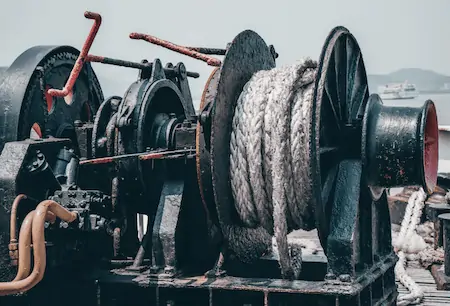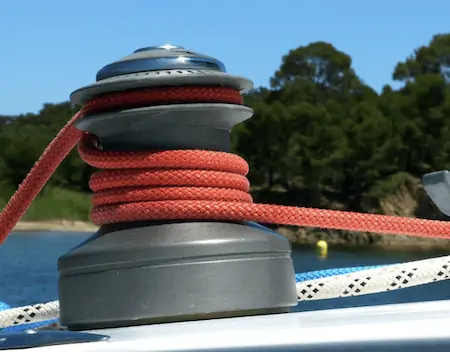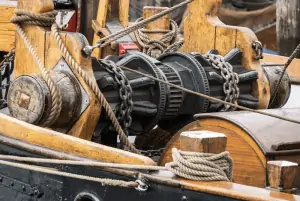In order to increase the longevity of the winches, you must learn how to spool a winch cable!
Since the ropes are one of the main components of a winch, they are likely to break down at times, especially if they aren’t spooled in an appropriate way.
So, spooling is required every single time you use the winch to serve different purposes. But, if you don’t actually know how to do it, then you might be stuck in BIG trouble.
Besides, if you want to take assistance from professional mechanics, then you can go and spend an arm and a leg!
Considering the above-written matters, I’ve done the research for a couple of hours in order to find out the easiest way to explain the whole spooling process.
So, keep on reading without more delays.
Contents
Step-By-Step Guide of Spooling a Winch Cable
Here, you can get plenty of knowledge about spooling a winch cable in the best way possible. For your convenience, I’m providing you with a step-by-step guide.
So, let’s check it out right now.
Step 1: Disengage the Motor
First things first, disengage the winch motor before you start the whole process of spooling. Don’t forget to remove the fair lead and the hook of the winch before you disengage.
Though it’s not a must, it can surely add extra convenience to improve your spooling experience a little more.
Nowadays, the clutch of some modern winches comes with a “free spooling mode.” That means you can spin the winch drum in any direction.
Usually, you can find the clutch lever on the side of the winch drum on most modern winches. Once you find it, be sure to turn on the “free spooling mode” to spool out the cable.
Step 2: Unspool the Cable
In order to spool the winch cable, your first step after disengaging the motor is going to be spooling out the entire wire so that you can spool it evenly.
Generally, the entire length of the cable should be pulled out, but you can stop spooling out at that point where the rope isn’t uneven.
However, as you’re learning the proper way of spooling, it’s best to spool out the entire rope.
Trust me, your spooling techniques will improve if you use your hands instead of the motors to unspool.
But if you’re not interested in making your hands useful for spooling out, feel free to rely on the motors and activate the “free spooling mode.” Hopefully, it’ll do the job perfectly.
Step 3: Organize the Winch Line
After you spool out the cable successfully, make sure to organize the winch line straight.
In order to do that without any complications, you can pull the rope in a straight line from the very beginning of the process.
These criteria must be fulfilled so that the winch rope doesn’t get tangled in the process. After that condition is met, you can smoothly spool the cable back to the winch drum.
Tips: Don’t stack the cable in front of the winch. Or else, you won’t be able to avoid entanglements.
Step 4: Engage the Motor
Next, you can activate the motor to start spooling in. After that, you need to plug in a remote-control system to pull the cable in the winch drum.
The winch drum will be locked after you activate the clutch lever. Then, you’re good to go for spooling in the cable back to the winch.
Step 5: Wind Up the Cable Slowly
Finally, the real deal begins in this step. But before you start to wind up the cable, you should take help from others.
Otherwise, it’ll be difficult for you to control both the rope and the remote controller. So, it’s better not to work alone in this step.
After that, start spooling the wire at a snail’s pace. Use your hands to direct the winch cable and make sure it goes from one side to another on the winch drum.
But, be sure to wear protective gloves for maximum protection.
Once the wire covers the full width of the winch drum, move on to the next layer by overlapping it. And then, repeat the process and complete all the layers by wrapping the ropes.
Never try to overlap if there is a gap in the layer or if the layer fails to cover the total width. If it happens, redo the whole process from the start.
Complete each of the layers with a tight-fitting spooled cable on the drum. It’s necessary to save space as well as to maximize friction.
Be sure to direct the ropes using your hands for each layer to complete successfully from one side to another.
Also, you should make it tight. And Voila! You’re finished spooling stronger wraps of the cable.
Why Is Spooling So Important?
In reality, spooling your winch cable gets so much priority because it ensures the maximum lifetime of your winch. Also, if you want to use the device over and over again, taking proper care of it is a must!
Chances are synthetic ropes might get jammed unless you know how to spool a winch cable correctly. Get it?
Well, consequently, it’ll be way more difficult for you to use the ropes again for any recovery. And guess what?
It might damage the cables as well. And I’m pretty sure you never want your winch to be jammed or damaged, right?
So, to prevent these types of situations, you should always recoil the wires properly by following the previously discussed steps.
And be prepared to face further coming obstacles and challenges in the future.
The Outcomes If You Fail to Spool Correctly
There are consequences to every action you take in your life. And when it comes down to spooling, it’s also not different from that.
So, if you’re unable to spool well, then you might face some of the following difficulties –
- Eventually, the cables will break down
- The lifespan of the winch will be reduced
- At the time of emergency, your winch will appear to be jammed
- The winch drum will be filled with imbalanced wraps of cables
- It’ll get a little heavier on one side only
- You have to spend a pretty penny for repairing the winch as well as replacing it with a new cable
Maintain Adequate Safety!
No matter how expert you’re in handling the winch, maintaining maximum safety is crucial when you’re operating such devices.
So, be sure to follow all the safety tips if you don’t want to take any risks at all:
-
Put on a Pair of Gloves
Yes. Wearing a protective pair of gloves is highly advisable when you’re handling the winch or such machines.
A winch is an extremely powerful tool, especially when the motor it gets is running. So, don’t think of getting closer to it without taking any preparation.
Even the little kinks of the steel wires can seriously injure your hands and might pierce your fist.
Therefore, remember to wear a strong pair of gloves that can protect you, even if the winch tugs your hands.
-
Use Synthetic Ropes
The chances of accidents drastically reduce if you decide to use synthetic rope instead of steel wire cable.
However, there is a small problem, which is you can get affected by abrasion. But hopefully, it won’t do any harm to you.
-
Don’t Rush the Process
Perform the “spooling” job slowly if you don’t wish to get injured. Although you’re a pro in this particular field, my personal suggestion is to complete the task without any hurry.
You know, safety comes first.
-
Protect Your Eyes
Alongside the hand gloves, be sure to wear protective glasses such as goggles whenever you start the “spooling” job. It’s always safe to keep our eyes protected.
Wrapping Up!
There it is! Now you better know how to spool a winch cable, and that too without taking any types of risks.
Ensure to follow each and every technique I’ve mentioned above, and of course, never to collect goggles and hand gloves.
These will let you perform the “spooling” task more safely and more effectively!






![Read more about the article Best Champion Winches Review 2022 [Top 6 Picks]](https://autopartsguideline.com/wp-content/uploads/2021/09/best-Champion-winches-reviews-300x198.webp)
![Read more about the article How to Use a Winch [Step by Step Guide & Precautions]](https://autopartsguideline.com/wp-content/uploads/2021/10/how-to-use-a-winch-300x193.webp)